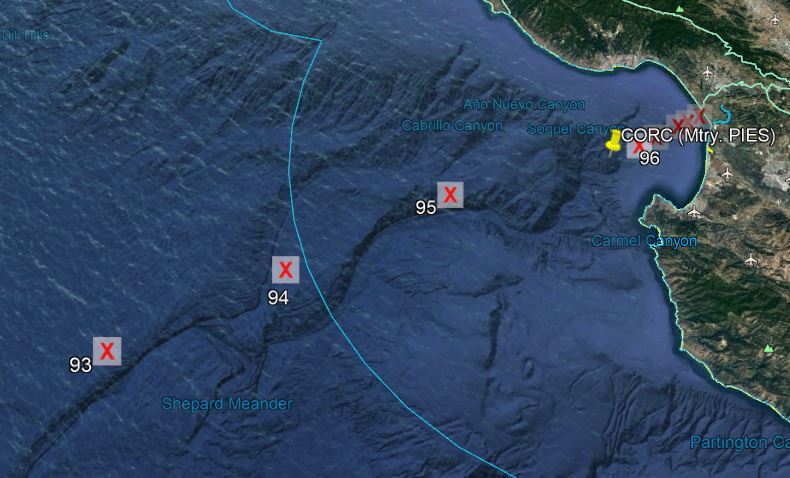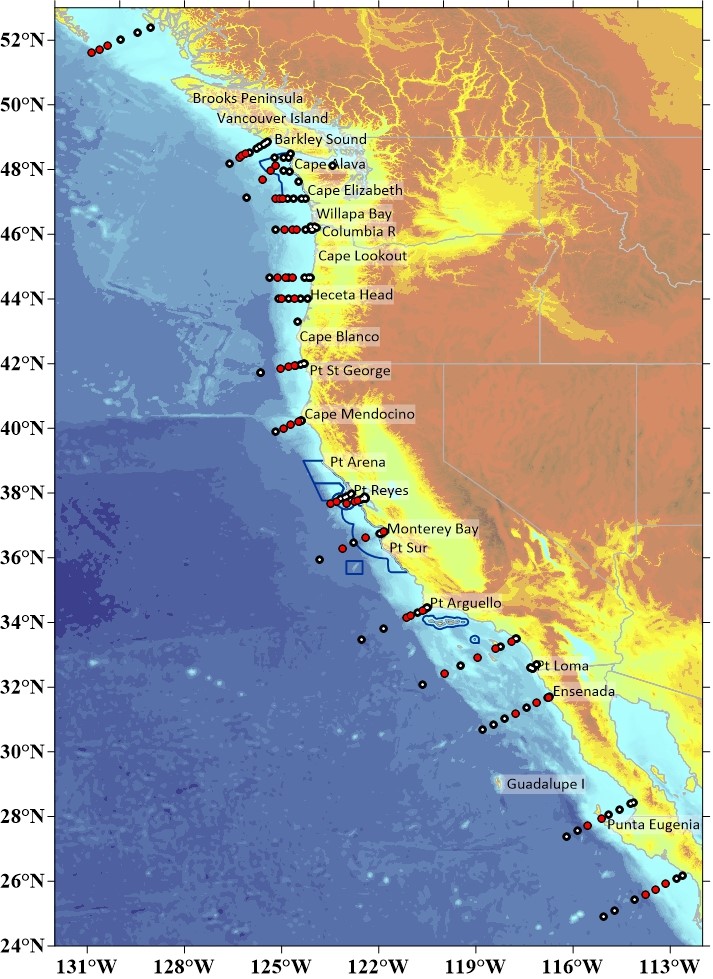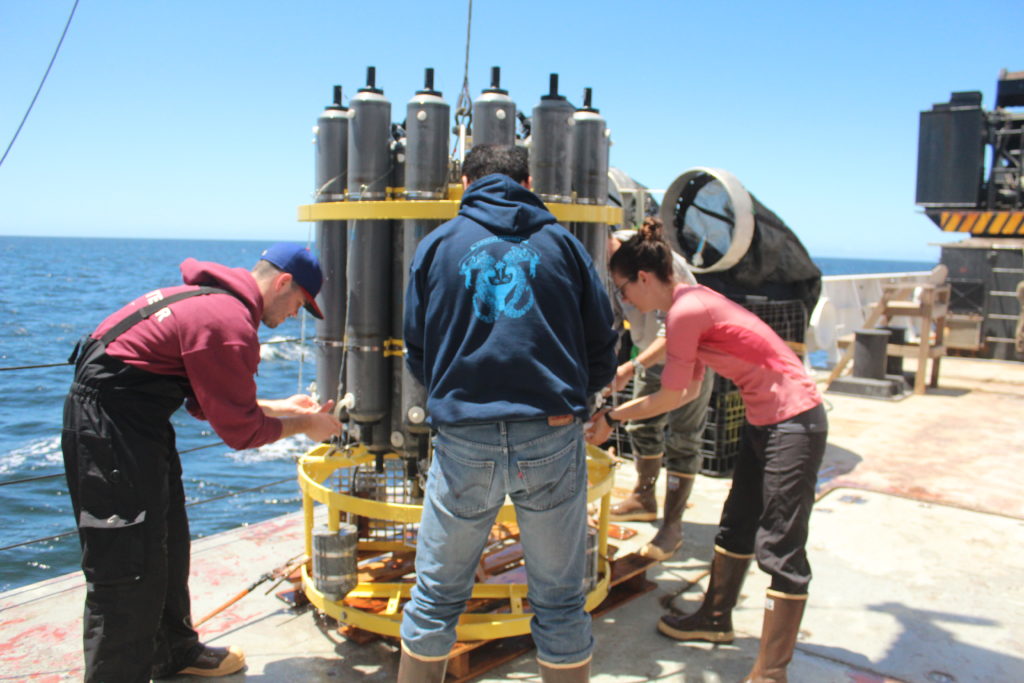Every four years, NOAA’s Pacific Marine Environmental Laboratory (PMEL) conducts a West Coast Ocean Acidification cruise that looks at chemical and biological processes from Canada to Mexico with an assortment of tools. Ocean acidification (OA) provides the context for much of the scientific work on this cruise. Cruise scientists are interested in how human-generated carbon dioxide (CO2) is affecting seawater chemistry and marine life along the West Coast of North America. The last cruise occurred in 2016, and although the pandemic delayed their plans for 2020, they will be conducting this expedition from June 13 to July 29, 2021. This expedition directly supports NOAA’s Ocean Acidification Program. The primary collection and measuring tool will be Niskin bottles aboard CTD (conductivity, temperature, and depth) deployments up to 200 meters in depth along lines running perpendicular to the shoreline. These Niskin bottles can be shut with a remote switch, capturing the in-situ water at the desired depth. Net tows (Neuston, bongo, Rita) will provide additional samples. From these samples, PMEL scientists will measure dissolved inorganic carbon, oxygen, nutrients, pH (acidity), methane, and environmental DNA.
One line of stations runs right through Monterey Bay National Marine Sanctuary. PMEL is scheduled to run this line in mid-July. There will be additional chemical and biological projects, including deployment of smaller sensor packages by hand and by winch, continuous underway partial pressure of CO2 monitoring via the ship’s scientific uncontaminated seawater line, deployment of Argo floats, and collection of phytoplankton and zooplankton by net tows with utilizing the ship’s winch.

The major objectives of the cruise are:
1) To characterize ocean acidification conditions on the U.S. west coast;
2) To conduct inter-calibration measurements near other OA observing assets in the study area, such as moorings, allowing inter-calibration of these autonomous assets with high-quality, ship-based measurements;
3) To provide calibration data needed to develop predictive models for aragonite saturation state, pH, and other important OA indicators in the California Current System, based on widely measured parameters such as salinity, temperature, and oxygen concentration;
4) To provide quantitative assessment of microbial, phytoplankton, zooplankton species composition and abundance, in conjunction with OA measurements; and
5) To provide scientific information on OA conditions and trends for resource management and decision support.

The California Current System, running along the North American west coast from British Columbia to Baja California, is a region where seasonal upwelling brings old, nutrient, and CO2-rich and oxygen-poor waters to the surface. It is an area of intense biogeochemical cycling, with high rates of primary production, air-sea CO2 exchange, and carbon export to the open ocean and sediments. Retention and recycling of material on the continental shelf are particularly high in the northern part of the California Current System, and these features predispose ecosystems in this region to being particularly susceptible to the impacts of decreased calcium carbonate saturation resulting from a combination of ocean acidification and natural processes along the west coast (upwelling, river inputs, seasonal development of hypoxia). Understanding the progression of ocean acidification in our coastal oceans, including Monterey Bay National Marine Sanctuary in the context of these other natural processes is critical for developing management, mitigation, and adaptation strategies for coastal resources. The cruise will also provide a large-scale picture of ocean acidification along the North American west coast, giving many other observing assets in the coastal ocean a larger context, including existing and planned moorings, repeat glider transects, and tests of wave gliders and other new technologies.
